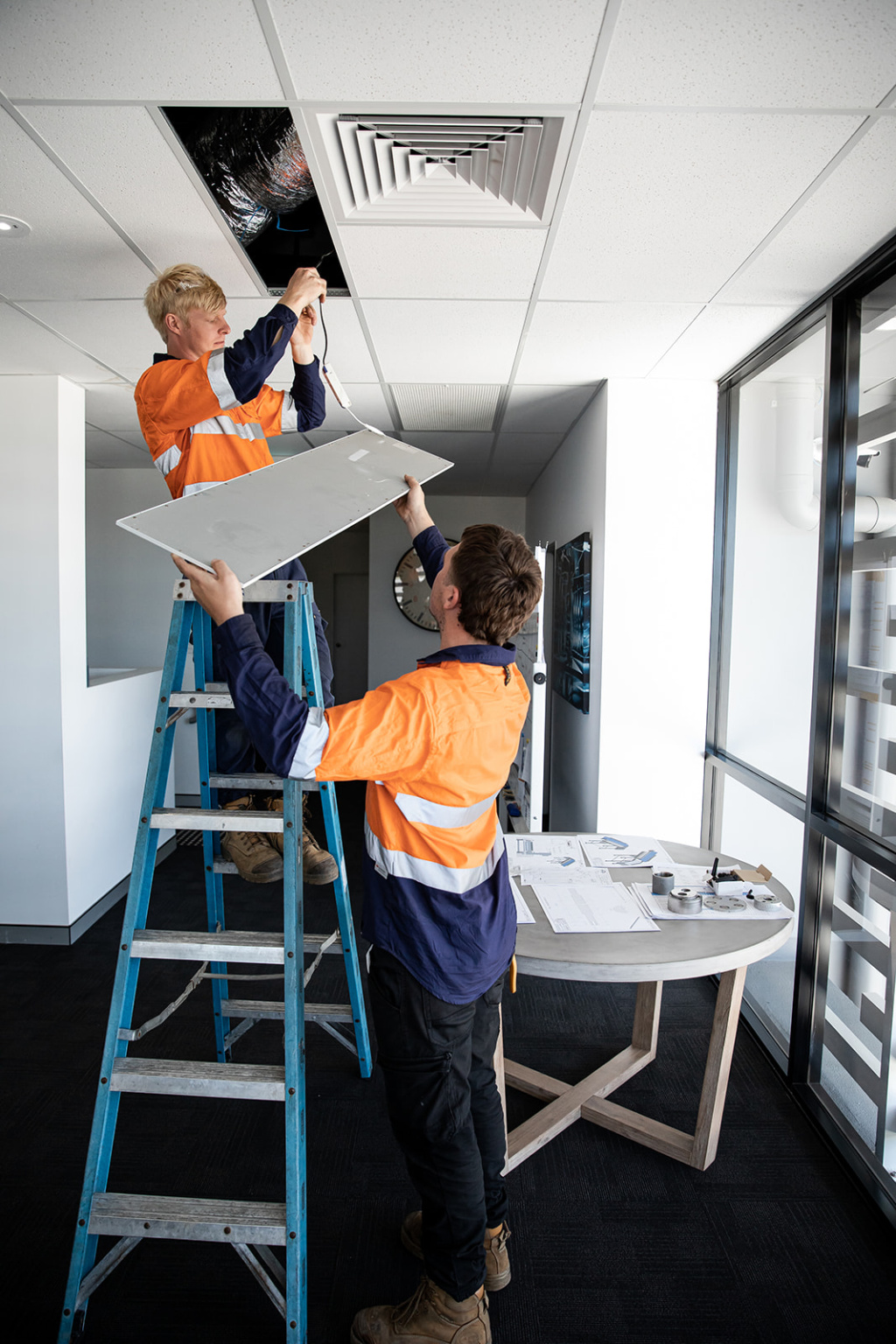Businesses operate with complex electrical systems in place. From energy and staff efficiency to the personnel and facility safety, electronics play a valuable part in a building’s infrastructure. When these electrical systems in place are unmaintained or overlooked, more than just time and money can be at risk. A maintenance electrician is a valuable resource businesses can use to conduct routine inspections of these electrical systems.
Employee safety and productivity are naturally high priorities in any workplace. Businesses rely on their equipment running efficiently. Poor electrical maintenance can lead to more than just a minor interruption. When left unattended, these systems have the potential to cause severe electrical issues. This can affect the operation of your business or may even cause injury or property damage.
Electrical Compliance
The best way for a business to avoid electrical faults and reduce risk to its employees and customers, is to have an electrical maintenance plan in place. In October 2017, Queensland introduced a new criminal WHS offence of ‘Industrial Manslaughter’. These provisions make it an offence for a person conducting a business or undertaking (PCBU), or a senior officer, to negligently cause the death of a worker.
Poor electrical maintenance and faulty electrical systems can:
- Lead to the risk of electric shock
- Enable unsafe working conditions
- Prevent safe evacuation during an emergency
Electrical compliance is often overlooked by businesses. These include Emergency Light Testing, RCD Testing, Test & Tag, and Electrical Thermal Imaging.
Emergency Light Testing
Emergency and exit lighting must be inspected, tested, and maintained in accordance with the AS/NZS 2293 Standard. Commercial emergency lighting and exit lighting systems are governed by the law.
All emergency and exit lights must undergo a 90-minute discharge test of the battery every 6 months. As stated under the AS2293.2 Standard. Records of all tests and the subsequent actions taken must be kept for compliance purposes.
RCD Testing
A residual current device (RCD), commonly known as a safety switch Is a device that prevents dangerous electrical shocks from occurring.
Residual current devices need to be regularly tested to ensure they remain in correct working order. They will only provide ongoing protection if operational. The frequency of their testing is outlined in AS/NZS 3760 Table 4. This table outlines the in-service safety inspection, testing method and frequency.
Test and Tag
Test and tag is the process of inspecting and testing electrical equipment for safety. This is in accordance with the test & tag frequencies outlined in the AS/NZS3760 Standard.
The process for test and tag is completed in two stages. First the equipment is visually inspected for any damage, then it is electrically tested to ensure there are no internal faults.
Thermal Imaging – Infrared Thermography
Thermal imaging can find hot spots caused by loose connections and defects in components. It detects problem areas so that failure or damage can be avoided ahead of time.
Industrial Power and Automation uses the latest technology in scanners. Which can detect electrical faults often missed by traditional methods of testing.
We are certified in Thermographic Scanning and our qualified technicians are recognised by the Australian Institute for Non-destructive Testing (AINDT).
In addition to electrical compliance issues, lack of electrical maintenance can:
- Cause the need for expensive repairs
- Create unnecessary downtime
- Reduce asset life
- Reduce energy efficiency
When is it time to call a maintenance electrician?
The best time to call an experienced maintenance electrician is before something has gone wrong. Some examples of when to call is:
- If you haven’t had maintenance completed in the previous 12 months.
- The business or school doesn’t have an established preventive maintenance plan in place.
- There is a need for a new switchboard or upgrade of an existing one.
- There are broken or faulty fittings.
- There are broken or exposed wires in view.
- Regularly used appliances test tags are out of date.
- Emergency lighting in the business or school is not functioning.
- The holidays are approaching and there’s an available opportunity for a scheduled shutdown.
- There is an incorrectly completed or no maintenance logbook in place.
- Access or walkway lights have been broken or disabled.
The failure rate of electrical equipment is three times higher for components that are not part of a scheduled maintenance program as compared with those that are. In addition, a planned electrical maintenance program allows the equipment owner to schedule the system outage at a time of their choosing rather than having to correct major problems resulting from an always untimely failure.
Performing preventive maintenance prolongs the life of your assets and equipment, reduces downtime, decreases reactive maintenance calls, helps you manage compliance, and prevents costly emergency repairs from occurring.
Contact a Maintenance Electrician
Our maintenance electricians offer extensive services for our clients. Servicing Brisbane, Logan, and the Gold Coast. We can schedule maintenance services based on your budget, needs and compliance requirements. Our management software can log your assets and keep a detailed record of their service history, as well as send reminders when the next inspection is due, leaving you to focus on what’s important.
We specialise in electrical building maintenance for large commercial buildings, factories, shopping centres, offices, and body corporate buildings. Partnering with building management professionals, property managers, asset managers and facilities maintenance organisations, IPA provides scheduled and reactive services to business from Brisbane to the Gold Coast.
- Exit & Emergency Lighting Testing
- Test & Tag
- Thermal Imaging / Thermographic Scanning
- RCD Testing
- VSD Testing & Maintenance
- Power Factor Correction Unit Inspections & Maintenance
- Switchboard Maintenance and Inspections
- Fault Diagnosis
- Power Outlet Installation & Replacement
- General Lighting Installation & Replacement
- Lighting Control
- Globe & Lamp Replacements
- Compliance Inspections
- UPS Service & Testing
- Generator Testing & Maintenance
- Air Circuit Breaker Testing
- Energy Efficiency: Power Factor Correction, LED Lighting
- Data Cabling Installation & Repair
Contact us today to have us schedule electrical maintenance in your building.









